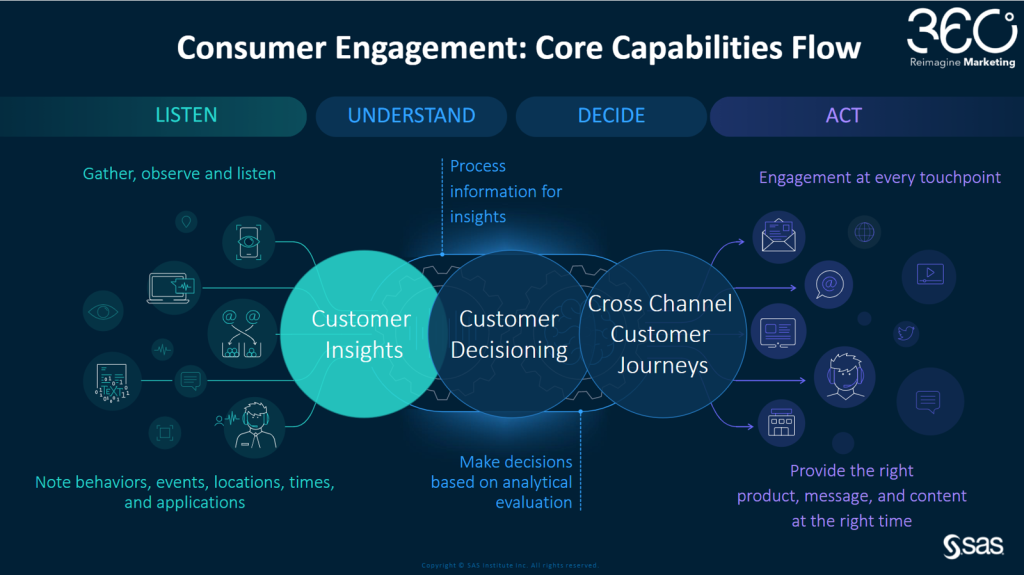Customers are more demanding than ever before. An effect of the pandemic is that brands had to go digital at any cost to survive and one of the side effects from this was an increase in customer personalization demand.
Email inboxes are full of emails from all possible brands – it seems that everyone has mastered sending email marketing these days but how many of these emails are relevant to customers? Relevance can be a significant differentiator for a customer to decide which emails they are opening and which ones they are not.
When I started working with marketing solutions around 15 years ago, I often heard MarTech solutions deliver the “right offer at the right time to the right channel.” Although I truly believed it at the time, after a while, I realized how much of a ‘sales talk’ it could be, especially as most implementation projects I was involved in were outbound campaign automation solutions, which means direct email campaigns scheduled to be sent to a predefined audience at scheduled date and time, totally different concept and consequently, outcome.
According to Mckinsey's studies, 71% of consumers expect companies to deliver personalized interactions. And 76% get frustrated when this doesn’t happen.
In this context, and for the sake of who is reading it, I will simplify and organize personalization into 3 levels.
Personalized emails can keep customers informed
As the first basic personalization example, customer communications are triggered by data transactions like an order or an event booking. These messages are personalized with customer details and transaction data such as name and type of transaction. They mostly focus on serving the customer service purpose – reacting to a customer’s action. Another example could be an outbound email campaign, where the brand decides which offer they would benefit the most and then select the segment of customers they believe to be the most appropriate to receive the communication.
In each scenario, the level of personalization relates to data provided or generated by the customer, such as name, address, age or details of the transaction like ordered products, booked event, date of order or event, etc. It is important to note that at this level of personalization, low or no analytics is applied in the process, which can result in customers receiving wrong or irrelevant communications.
It is not always bad; there are some good examples of well-executed campaigns at this level – one would be when you book a ticket for an event and then receive an email confirmation with all booking details. Later, one week before the event date, you receive a follow-up communication to tell you what to expect at the venue where the event is happening. A day before the event, another email is triggered to tell you the event is on the next day. It could be that the system notices you haven’t downloaded your tickets and automatically attaches it to the last email reminder for your convenience. What a great experience it could be!
Although they hold very simple personalization, these communications effectively build engagement with the customer and keep them informed about the event, avoiding unwelcome surprises.
Pre-scored offers can be great, too
A grocery retailer emails customers regularly to remind them about products that these customers are used to buying and are on offer during the campaign period. In this scenario, personalization starts to feel more meaningful for customers and can achieve excellent results in specific industries. In this case, retailers interact with customers based on their previous engagements with the brand or lookalike models.
These emails aim to get customers’ attention and increase engagement with the brand as the products are relevant to them. Grocery retailers can leverage this intimate feeling with customers using pre-scored offers as they have a high volume of data about these clients who shop consistently and regularly with the brand. Additionally, these customers’ shopping missions do not change often; they typically buy the same grocery items for their family's dietary, personal hygiene and household maintenance requirements all at once.
Usually, there is a multi-channel strategy in this scenario. However, because the real-time element is not present, these channels are often siloed and cannot deliver a consistent message to the client.
I don’t mean to deny these email campaigns' importance. They are still essential tools to serve many purposes. However, it isn’t the right way to deliver that “right offer at the right time to the right channel.” So what would be the best option to provide real 1-2-1 personalization? What can brands do to engage more effectively with customers?
Only real-time personalization captures all customer needs
It is a fact that most real-time data should be used more effectively. Imagine personalization at its best, companies using behaviour in real-time to understand customers' needs straight to the point and being able to offer what they need, requiring fewer clicks, resulting in more convenience, comfort and a happy customer.
In this scenario, having an orchestrated omnichannel customer journey when the brand puts the customer at the heart of every transaction is a requirement – this is what we can call the real “right message in the right place at the right time.”
Real-time personalization is vital for brands when customers interact with them less often, when they want to deliver a consistent omnichannel experience or when they offer a variety of possible shopping missions. In these cases, being able to identify each customer’s shopping journey and act with the right offer at the exact moment while the customer is interacting with the brand's inbound channels can be the game changer factor which will define if that customer is going to covert and also – sometimes even more importantly - what is the sentiment that the customer will take away from that experience.
Collecting the data from customer behavior in real-time and combining it with the power of AI and ML to predict and learn from current and previous engagements for each customer is key to delivering effective real-time personalization and wonderful customer experiences.
“Companies that excel at personalization generate 40 percent more revenue from those activities than average players.” The value of getting personalization right or wrong is multiplying | McKinsey
Three different layers of personalization deliver differentiated customer experiences for brands; the takeaway is that it is an evolving work for marketers. Similarly, as a baby, companies can’t expect to be able to run before walking their ‘baby steps.’ It is important to take the time to reflect on what has been done, what can be done and what the strategy is to improve and enhance your customer experience, then decide what the next step of this journey looks like to your organization.
How can SAS help?
It is not a secret that SAS has almost 50 years of experience delivering analytical solutions to every challenge. Our SAS Customer Intelligence solution – CI 360 – is packed with embedded analytics to deliver the best in class Martech solution for every need.
SAS Customer Intelligence 360 is a cloud solution that allows your brand to build one step at a time on your marketing journey and strategy to achieve the best experiences for your customers. We can help you at any level of personalization you want to deliver and support you in achieving your brand’s marketing strategy.


